Simple One Page Website For Australian Businesses
Beautiful, Fast & Cost Effective
Affordable One-Page Website For Your Business
Attention Australian Small Business Owners: Get a Website That Works as Hard as You Do (Without Breaking the Bank)
Are you tired of complex, overpriced websites that take forever to launch and do nothing for your business? Say hello to Constructive Visual’s one-page website design service – the solution you’ve been searching for!
We know that you’re busy running your business, so we’ve made our service fast, affordable, and effective. Our expert team of designers and developers will create a website that captures your brand’s personality and showcases your products and services in a way that resonates with your target audience.
And because it’s just one page, you don’t need to worry about getting lost in a maze of confusing pages and menus. Your customers will find what they need quickly and easily, resulting in more leads and sales for your business.

Our one-page website design service is the perfect choice for Australian small businesses that want to make an impact online. With years of experience in the industry, our team of expert designers and developers can create a stunning website that captures your brand’s personality and converts visitors into loyal customers.

What Makes Our One-Page Website Design Service So Special?
We know that time and budget are major concerns for small businesses, which is why we’ve created a service that’s affordable and fast. Our one-page website design service is designed to be completed within days, not weeks or months. And because it’s just one page, you don’t need to worry about a complex website structure, which means we can pass those savings onto you.
But just because it’s simple doesn’t mean it’s basic. Our one-page website designs are modern, engaging, and intuitive. We take the time to understand your business goals, target audience, and unique selling proposition, so we can create a website that perfectly represents your brand.
Plus, we know that a website is more than just a digital brochure. It’s a tool for growing your business and reaching more customers. That’s why we include all the essential features your small business needs to succeed online.
Why Choose Constructive Visual?
There are plenty of web design services out there, but none can match the quality, speed, and affordability of Constructive Visual. Here are just a few reasons why our one-page website design service is the best choice for your small business:
- Affordable pricing with no hidden fees
- Fast turnaround times that don’t compromise on quality
- Expert designers and developers with years of experience
- Personalized service that’s tailored to your needs
- 100% satisfaction guarantee
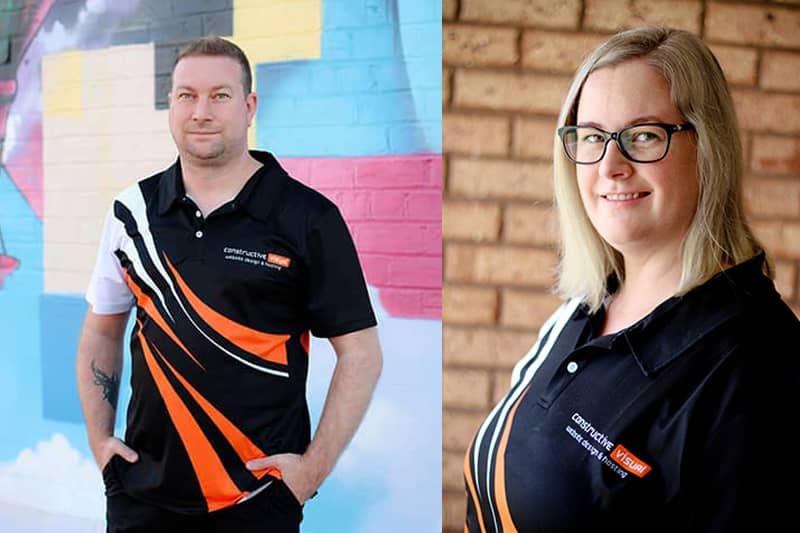
But don’t just take our word for it. Here’s what some of our satisfied customers have to say:

Simply Home Mods
“Peter at Constructive Visual has done a fantastic job with our branding and website design. He takes care of all the finer details and provides quick, relevant and reliable services and any issues are sorted almost immediately. It was great to work with a professional and local team. Thank you for providing a great service to the Wheatbelt. Highly recommended.”
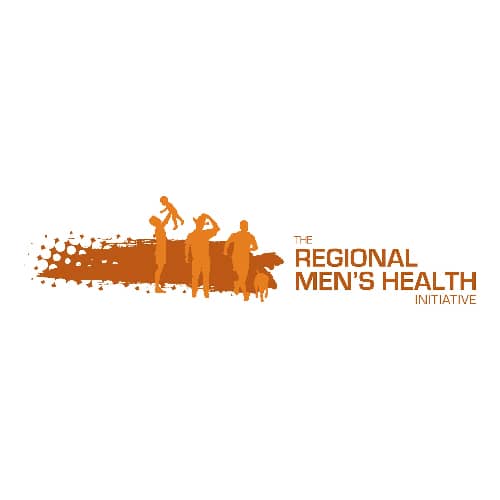
Regional Men's Health Inc
“We approached Peter from Constructive Visual to update and refresh our existing website. Peter worked with us to make changes based on our requirements. He nailed incorporating our organisation’s main messages of who we are & what we do into the website design. Highly recommended.“

WA Lot Feeders
“My experience working with Constructive Visual has been nothing but positive. Peter was professional, supportive and patient, and turned our information dump into a wonderfully professional, bright and catchy website. The after-sale service has also been exceptional. I would highly recommend Peter and the team at Constructive Visual!“
Amazing Features To Bring Your One Page Site To Life!
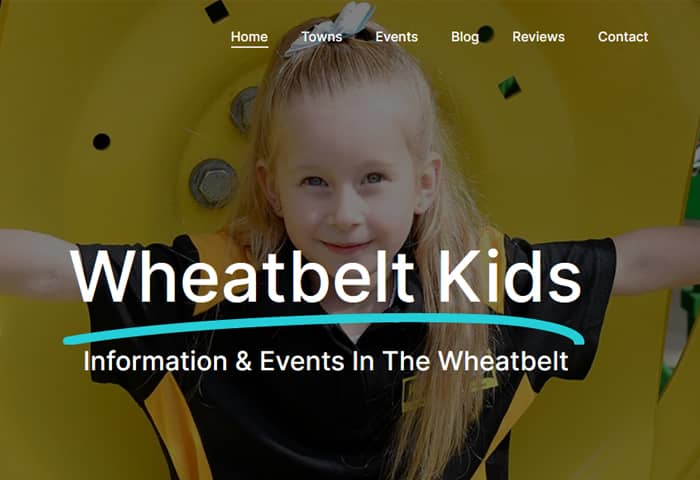
Menu Section Navigation
The menu section navigation is placed at the top of your single page website for visitors to be taken to the right section of the page.
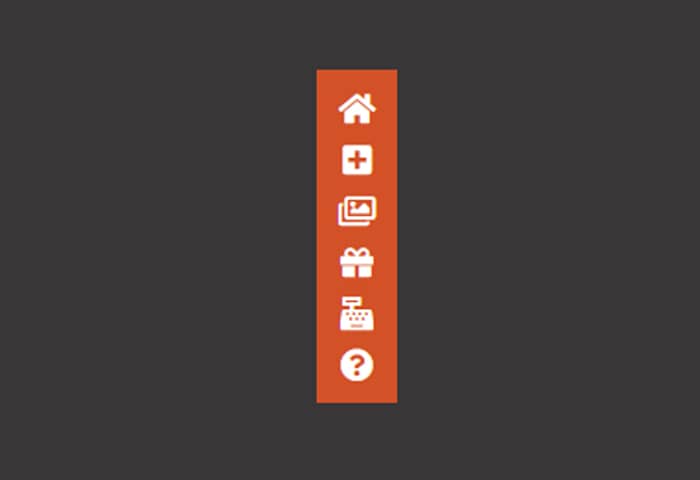
Quick Side Menu
The quick side menu is a compact menu that can be used by visitors to jump to sections without going to the top of the page.
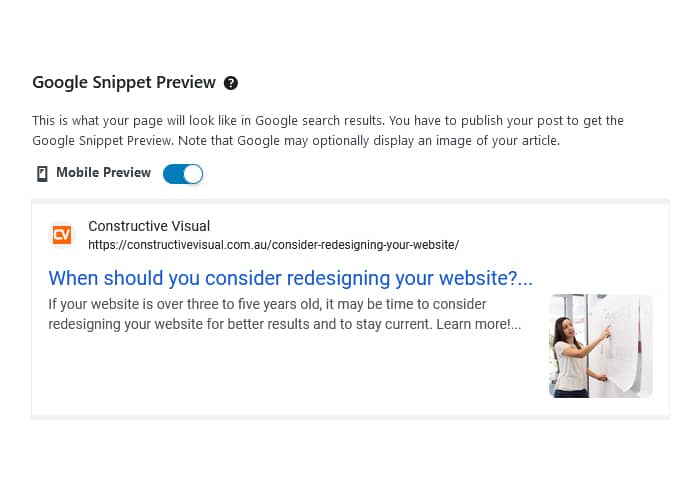
On-Page SEO Ready
Your single one-page website will have Simple SEO features to make it appear readable on Search Engines such as Google.
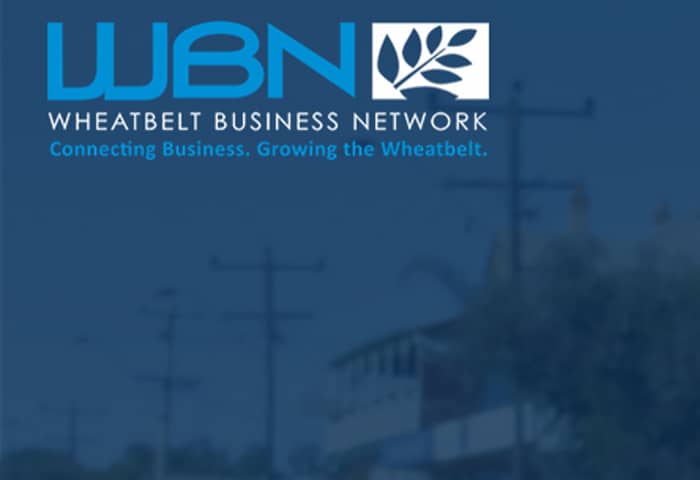
Logo / Branding
Supply a copy of your business logo and your branding kit to have your single page website on brand.

Photos / Images
Supply your own photos and images to complete your single page website. We will resize and compress the images for web.
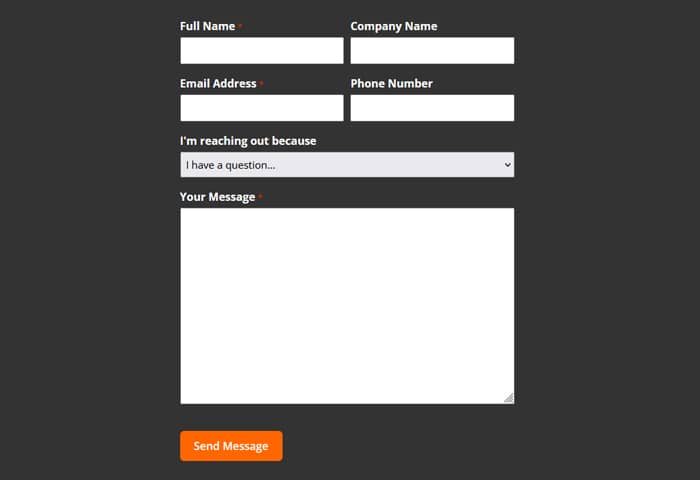
Contact Form
Let visitors to your single one-page website reach out to you by a simple contact form. Supply the fields and we will create the form.

Products
What would be a website if you don’t advertise your products. Provide us with your product name, short description & links.

Services
Let your visitors know what services your business offers. Provide us with some information about your services.

Quote Form
Let us simplify your quotation process by gathering some information that you require to put together a quote for a client.
Single Page Website Showcase
Albany Tours
The Albany Tours website is a simple one-page website with four unique sections which include home, tours, transport and contact us.
The website includes links to the tours packages (third-party payment) transport links, contact information and a quick side menu.
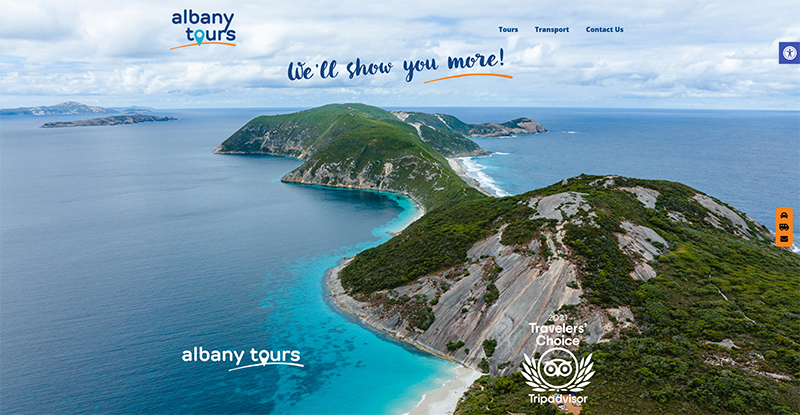
Zax & Co
The Zax & Co website is a simple one-page website with eight unique sections which include home, product spotlight, homewares, about, cafe, testimonials, location and contact.
The website includes a product spotlight section, opening & closing hours, Google map and a quick side menu.
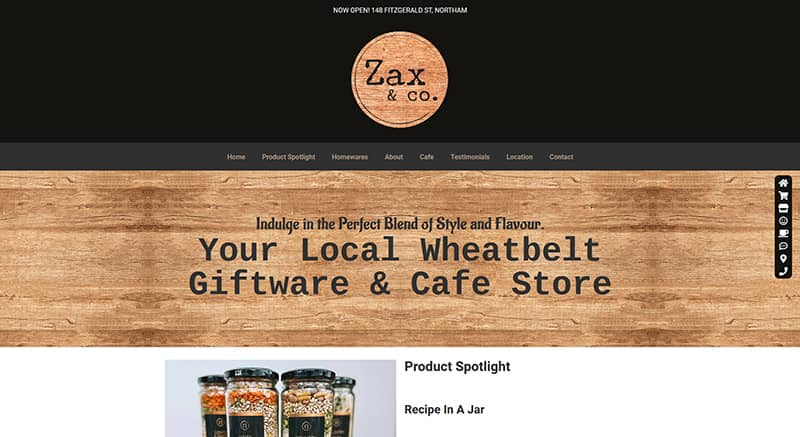
Steamwest Carpet Cleaning
The Steamwest Carpet Cleaning website is a simple one-page website with five individual sections, including home, about us, services, results and contact.
The website includes before & after photos, a services map, contact and a work submission forms.

Extra Optional Features To Enhance Your Single Page Website
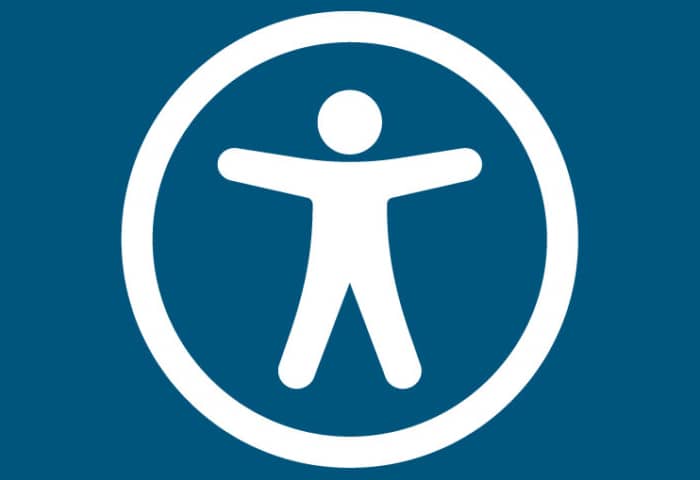
Accessibility
Make your single page website accessibility-friendly for your visitors so they can easy to navigate your site with ease.
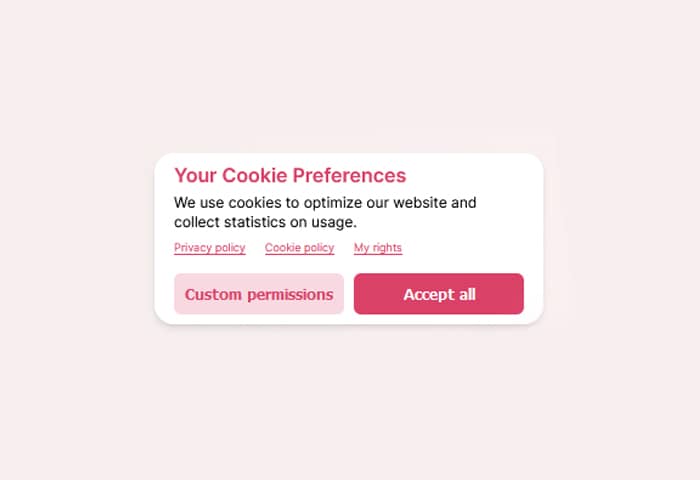
Cookie Consent Notice
Make your Single Page Website GDPR / CCPA / LGPD / Australian Privacy Act 1988 Compliant to avoid potential fines.

SEO
SEO is crucial to make your Single Page Website more visible to gain traffic to convert prospects into customers.
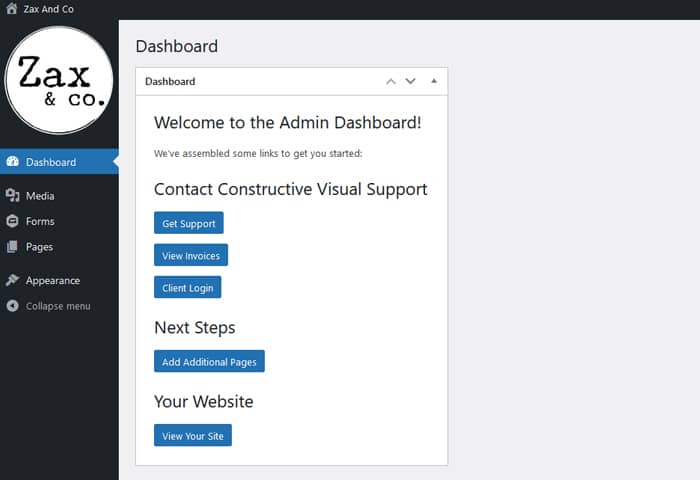
Admin Access
Need control over your Single Page Website? We can create a admin dashboard to give you admin access to your site.

Chatbot
The best time to engage your visitors are when they’re on your Single Page Website. Get a chatbot to begin the coversation.

Gallery (Small)
Add a small website gallery to your Single Page Website to showcase your work to your website visitors.

Google Submission
Let us spread the word and let Google know to index your website. We will create a sitemap XML ready for Google.

Google Analytics
Let us install Google Analytics on your Single Page Website you can track visitors on your site. (See Cookie Consent Notice)

Paid SSL Certificate
Get a secure 256-Bit Encrypted SSL Certificate with up to $250,000 Warranty in case of a security breach to your site.

Domain & Web Hosting
There is a .com.au domain name and web hosting included in the price for this deal. This is an ongoing annual fee. (Optional)

Website Maintenance Plan
Get full monthly reports of theme and plugin updates to your Single Page Website. You will be emailed monthly for the subscription.

Blog Posts
Add content to your website and attract organic keywords from the content that you write for your site. (Admin Access Required)
Purchase Your Own Single Page Website Today!
Don't Miss Out on Our Limited Time Offer!
For a limited time only, we’re offering our one-page website design service at a special discounted rate. Don’t miss out on this opportunity to take your small business online with a website that’s fast, affordable, and effective.
To learn more about our one-page website design service, visit our website or get in touch with our team today. We can’t wait to help you grow your small business online – and make you smile in the process!
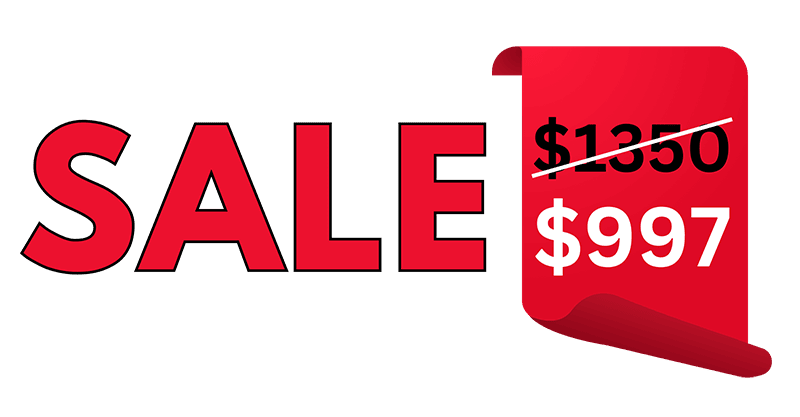
"*" indicates required fields

Single Page Website Frequently Asked Questions
By paying for your website upfront, you’re committing to the completion of your project in a timely fashion. Together with Constructive Visual’s experience and expertise, we can create an amazing website that will deliver the results you desire.
When you make a full payment upfront, it shows your commitment to the project and indicates a mutual interest in working together. We understand that money is hard-earned and that trust must be earned before moving forward. That’s why we guarantee satisfaction when making full payment upfront – if for any reason you’re not happy with my work or if something goes wrong along the way, we will do whatever it takes to ensure you get what you paid for.
Let’s build something great together!
One of the main cons of a one page website is its limited space. No matter how succinct you strive to be in your writing, a single page simply doesn’t have enough room to adequately showcase your products or services. If you’re attempting to highlight multiple offerings, an overcrowded page can make it difficult for visitors to focus on what matters most – and that’s easily lost when content becomes dense.
If your site needs regular updates, like news for example, a one page site may not be ideal as adding information means constantly refreshing the entire page instead of just sections related to the update. Search engine optimization (SEO) can be more challenging with a one-page website than with multi-page sites since there are fewer opportunities to include relevant keyword phrases and content.
If you’re looking for a comprehensive digital presence with detailed information about products/services, customer stories, and other essential website elements, then a one page website may not be the best choice. It’s great for quick, focused introductions but won’t provide all the features necessary to create an in-depth experience that introduces a user to your business.
To make sure your website is effective and meets your objectives, take into account its function as well as the amount of content you need to present. A one page site can be perfect for some small businesses while others will benefit more from multiple pages. Consider carefully which approach suits you best before investing time in building or updating your website.
One of the biggest drawbacks to a one page website is that it limits the amount of content you can include. When a user clicks on a menu item, they don’t get any more information than what is visible on the page itself. This means that potential customers won’t be able to learn about every product or service you offer or read up in detail about company history, initiatives, and other topics related to your business. You also miss out on the opportunity to show off customer reviews and pictures from past events or projects.
When it comes to creating a website, simplicity is key. Opting for a one page website is an effective way of conveying your message and getting users to take action without overwhelming them with too much information or design elements.
A one page website typically contains all the same sections as any other web page but condensed in an easy-to-navigate format that allows visitors to jump between understanding your mission, learning about products and services, and getting in touch quickly. Here’s what you should consider when creating these sections:
Home – This is where you introduce yourself and present your main proposition clearly including a call-to-action (CTA). Keep this short and concise so that visitors know exactly who you are and what you do in a matter of seconds.
About – This is where your visitors can learn more about your mission, values, and start to build trust with your business. Keep this section light — offer a few highlights that make you stand out but don’t overwhelm the reader with too much information.
Products & Services – Here’s where people come when they are ready to take action — use compelling visuals and concise descriptions to showcase what you offer. Focus on how these products or services can benefit customers by solving their problems and helping them reach their objectives.
Contact – Include basic contact information as well as any forms for inquiries or newsletter sign-ups here so that users know exactly how to get in touch with you.
Creating a one page website has its benefits — it’s quick and easy to setup, looks professional, and drives conversions by focusing on only the most important elements. By including all of the necessary components, you can ensure that your website is both effective and informative — giving visitors an experience they won’t forget. With the right strategy, this efficient approach can make all the difference in helping your business reach its goals.
A one page website is the perfect solution when you need a simple, effective and efficient way to showcase your business or products. The advantage of having all your content on one page is that visitors can access all the information they need quickly and conveniently. This makes it easier for them to get an overview of what you are offering, as well as more detailed information about specific aspects of your services or products. With a one page website, you can ensure that everything appears professional and consistent because there will be no extra pages with different styles or formats.
A great benefit of one page websites is that they usually load faster than multi-page sites due to their smaller size; this means visitors won’t have to wait around for pages to load before they can access the information that interests them. This also means that one page websites are more likely to appear at the top of search engine result pages, which can help you get more organic traffic.
One page websites are also ideal for businesses with limited resources who don’t have the time or money to maintain a large website. A single page is much easier to update than multiple pages, and it won’t require constant attention in order to remain relevant and up-to-date. Plus, if you decide to include an eCommerce component on your site, it’s easy to manage and maintain.
A single page website offer a great way for businesses to quickly and easily create an online presence. Although it may not have the same bells and whistles as a multi-page website, its simplicity and minimalism can be just as effective in achieving your goals. Plus, with more people accessing websites from mobile devices, one page websites are ideal for providing a great experience on smaller screens.
Overall, one page websites offer a lot of advantages for businesses looking to get online quickly and easily. They’re simple to maintain and update, they look great on all devices, and they’re often more likely to appear at the top of search engine result pages – making them perfect for driving organic traffic to your site. So if you want to make an impact online without spending too much money or time doing so, consider a one page website. It could be the perfect solution for your business.
When creating a one page website, the most important thing is to make sure it’s well-structured and organised. This means breaking up the content into distinct sections, making sure each section has a clear purpose and focus, and ensuring that all relevant information can be found quickly and easily.
Start by considering how you want visitors to navigate through your site. A linear structure will generally work best for one page websites, as this allows users to scroll down and find what they need without having to jump around between pages or sections. You’ll also want to include prominent calls-to-action throughout the page which direct users towards key areas of interest.
Make sure that each section is visually separated from other content – for example, by using background colors, patterns or textures – so that visitors can easily find what they’re looking for. Include headings and subheadings to break up the page into logical sections, focusing on one topic at a time.
Be sure to include plenty of white space throughout your design too. This will make it easier for users to read, as well as giving them enough room to click links and navigate through the page without feeling overwhelmed. You may also want to include some interactive elements such as slideshows, videos or forms which give visitors more control over their experience.
By following these tips you’ll be able to create a compelling one-page website that is easy to navigate and engages with your target audience. Whether you’re creating a website as part of a start-up venture or simply promoting your business, the right design can make all the difference. Keep in mind that you don’t need to include every single piece of information on one page – it’s often better to keep things simple for maximum impact. With these tips in mind, you’ll be able to create an effective and engaging one-page website that meets all of your needs.
Remember that small updates over time are key to maintaining its effectiveness – so be sure to tweak and refine regularly!
Good luck!
Single page websites are ideal for individuals and businesses that want to provide concise information about their products or services. A single page website allows users to quickly access the most important elements of a business in one place, which is especially useful for companies with limited resources and time.
For example, a small business owner may benefit from having all the necessary contact, product, and service information on one page. Single page sites are often more cost-effective than multiple pages since they require less coding and maintenance. Furthermore, these types of sites are great for mobile users as they offer quick loading times and an intuitive user experience.
If you’re looking to get your message across quickly and effectively while keeping costs low, then a single page website could be the perfect solution for your business. It allows you to tell visitors all they need to know about your services, products, or offerings in a succinct and attractive format. Whether you’re aiming for a sleek professional look or a more laid-back approach, there is an option for everyone. Plus, with more responsive designs and simpler navigation, single page websites are becoming increasingly popular with users of all ages.
Don’t let concerns over cost and complexity keep you from creating a powerful online presence that will give customers the information they need in a snap. A single page website is an affordable way to showcase your company’s key elements while delivering an engaging experience that will leave visitors eager to learn even more about what you have to offer. From highlighting your products and services, to providing contact details and showcasing customer reviews, a single page website can be tailored to meet the needs of any business.
If you’re ready to take advantage of all that a single page website has to offer, take the time to explore what options are available and find the perfect match for your company. Whether it’s through a template-based design or developed from scratch by an experienced web designer, there is something out there that will work for you—and your customers will thank you for it!
A one page website is also known as a single page website, or long scrolling page. It’s a type of website that contains all the necessary content on one page only. This type of website has become popular for businesses and individuals looking to make a digital presence without needing to invest in complex web development projects.
One-page websites are ideal for entrepreneurs who want to quickly launch their brand and also for small businesses who don’t have the resources or budget to invest in elaborate web design projects. These types of websites often feature creative designs and exciting interactive elements to create an engaging experience for visitors.
The main advantage of a one page website is that it offers simplicity. All the most important content, such as contact information, services offered and even product descriptions can all be found in one place. Not only does this make it easier for visitors to quickly find what they are looking for but also saves them time scrolling through multiple pages to get the complete picture.
As an added bonus, one page websites typically require less maintenance and can be updated more easily than a regular website due to its minimalist design. This makes them especially useful for businesses who want their website to stay current but don’t have the resources or budget to frequently pay for web development services.
One-page websites are perfect solutions for businesses and individuals looking to make a digital presence without needing to invest in complex web development projects. They allow entrepreneurs and small business owners to quickly create an attractive and professional website to promote their business online without breaking the bank.
A one-page website can be used as a landing page to capture potential customers’ information.
It’s an effective way to showcase your product or service in an engaging and concise manner. A one-page website distills the key details of what you have to offer, while also providing visitors with enough information that they feel comfortable and confident making contact with you.
By using a single page to present your website’s content, visitors are more likely to stay on the page, which increases the chances of them taking further action such as visiting other pages or contacting you for more information. Additionally, having all important content on one page allows for faster loading times and easier navigation through the site than if users had to navigate multiple pages. Therefore, a one page website can serve as an effective landing page, drawing in visitors and efficiently leading them to your desired outcome.
When creating a one page website, you should be sure to include all the necessary information that would typically appear on multiple pages. This includes bios of key personnel, product or service descriptions, contact details, and social media links. Additionally, you may want to consider including customer reviews or testimonials for further credibility. By providing this comprehensive content on just one page, visitors get a comprehensive look at who you are and what you’re offering without having to search through other pages – making it the perfect landing page for any website!
At the end of the day, designing a one page website is not only a great way to showcase your business, but it also has the potential to convert more visitors into customers. With careful planning, you can create an effective one page site that provides all the necessary information in a concise and persuasive manner – making it the perfect landing page for any website. If you’re looking for an efficient way to get your message out there, then look no further than a one page website!
If you’re unsure if a website is a single page or not, there are several key elements to look for that can help you determine. Generally speaking, single-page websites are shorter and simpler than multi-page sites, with all the content accessible from one primary URL without any additional pages. Single-page sites tend to follow a linear structure that guides viewers through the most important points quickly and efficiently.
Look out for design elements such as scrolling navigation bars, hamburger menus (the three stacked lines), or full-screen headers and images. As well as these design features, single page websites usually have less content that loads faster than on a multi-page site. It’s also likely to be easier to navigate and get around without having to click through multiple pages.
Of course, single-page sites may not be the best choice for certain types of websites or businesses. For example, complex e-commerce stores, large corporate sites with multiple divisions and offerings, and portfolios that showcase a wide range of projects probably need more than one page to do justice to their content.
Ultimately, when deciding whether you should opt for a single-page website, it’s important to think about how much information you want your visitors to have access to quickly and easily. If the answer is ‘not much’ then go ahead – single-page sites can provide an efficient way of displaying limited information without overwhelming users with too many choices. If, on the other hand, you want to provide more detail and information, then a multi-page website may be your best option.
The length of a one page website really depends on the purpose it is intended to serve.
If you are creating a landing page that serves as an introduction to your business, then you should keep it relatively short – between 500 and 1,000 words. This will give visitors enough information to understand what you offer without overwhelming them with too much text.
On the other hand, if you are creating a site that contains multiple elements such as a blog, portfolio or contact form then you may need to make it longer. Aim for around 2,000-3,000 words so that visitors can get all the necessary details about your business in one place.
No matter how long your website is, make sure it is easy to navigate and designed with the user in mind. Break up text into short paragraphs, use headings and subheadings to organize your content and make sure key information is highlighted. Also, keep sentence structure simple so that visitors can easily scan through your page for the most important details.
When creating a website of any length, it’s also important to remember that visuals are just as important as words. Use images, diagrams or videos to bring your site to life and engage visitors. Doing so will not only help you communicate more effectively but also break up longer sections of text, making them appear less overwhelming.
Ultimately, how long your website should depend on its purpose – if it’s a one-page site, it should have everything that visitors need to know in a concise and easy-to-understand format. Whether your page is 100 words or 1,000 words long, it should be easy to navigate and allow visitors to find the information they need quickly and without hassle.
A single page website is an effective way to create a user-friendly experience for your customers.
By having all the content on one page, you can avoid the need to load multiple pages, which reduces stress on their browser and improves overall performance. This also means that visitors don’t have to scroll through different menus or click multiple links in order to find what they’re looking for—it’s all right there on one page!
To make sure your single-page website works correctly and looks great, there are some key elements you should consider: navigation structure, content hierarchy, visuals, and calls-to-action (CTAs). Your navigation structure should be clear and concise so that visitors know exactly where they are on the page. You should also consider how to organize your content in a logical way that makes it easier for viewers to digest the information quickly.
Visuals such as images, videos and graphics help break up long blocks of text and offer more engaging ways to communicate with your audience. Strategically placed CTAs allow visitors to take action based on what they’ve read or seen—this could be downloading an ebook, signing up for a newsletter, or getting in touch with you directly.
Keep in mind that single-page websites are best suited for sites with limited content or those whose main focus is selling one product or service. If you have too much content, visitors may become overwhelmed and frustrated trying to find what they’re looking for. For rambling, content-heavy sites, it’s better to go with a multi-page website that allows for more organisation.
When considering a single-page website, make sure that you focus on making the page as intuitive and user-friendly as possible. A good single-page website should have a clear flow and guide visitors to their goal with minimal effort.
Building a single page website can be a time-consuming process, but the end result can be worth it. The standard turnaround time is 2-5 business days depending on how much content needs to be created or provided by the client. This includes logos, written content, images and photos – all of which are essential components of any online presence.
Creating something that looks good and performs well takes experience and skill; it’s not just about throwing up a few words and images on a page. Each aspect must work together for an engaging user experience, so having your web design partner take the reins to create something special could make all the difference in making your website stand out from the crowd.
We understand that you’re looking for a speedy turnaround – and that’s why our experienced team of professionals are ready to provide you with exemplary service. We guarantee that your single page website will be delivered within 2-5 business days, providing all materials are supplied in full.
We understand how important it is for businesses to have a presence online – that’s why we work hard to ensure that each client receives their project swiftly, without compromising on quality or the user experience. From start to finish, we’ll make sure your project looks its best and can easily be found by potential customers.
With our efficient workflow and commitment to customer service, you can rest assured knowing you’ll have a fantastic website up and running as soon as possible. So don’t wait any longer – get started today!
Building a website in Australia doesn’t have to be expensive. You can get a one-page website for as little as $1249, which is the one-off cost for the website. After that, you’ll need to set up web hosting and register your domain name. Web hosting starts at about $160 per year for an annual subscription, and .com.au domain names are just $22 per year. With all of these services together, you’ll have a professional-looking website without breaking your budget!
Once you’re up and running, you can add more pages or features whenever you want – giving you maximum flexibility and scalability in the future. So why wait? Get your business online today!
When it comes to creating a single page website, it’s important to have the right sections in place for optimal user experience and navigation. The standard sections for any single page website should be Home, About, Products/Services, and Contact Us. Each of these sections should provide visitors with key information that is useful and relevant to their needs.
The Home section is the landing page or first impression of your website. It should clearly explain who you are and why people should choose your company over others. This section can also include links to product pages or other services related to what you offer.
The About Us section should provide detailed information about your business – its mission, history, values and goals. You can also link to any social media profiles here.
The Products/Services section should provide detailed information about the products and services that you offer. This should include product descriptions, pricing, pictures and reviews.
The Contact Us section should have contact information including your address, phone number, email address and a contact form. You may also want to include a map of your business location and hours of operation.
While these are standard sections for most single page websites, you can also add additional sections if needed or desired. This could include an FAQ section or blog so that visitors can get more information on topics related to what you offer. You can also link to other sites such as social media accounts or online stores here.
No matter what sections you include on your single page website, it’s important to make sure that the content is engaging and informative. If you are selling products or services, make sure that each product or service has a detailed description along with pricing information, pictures and reviews. This will help visitors get a better understanding of what you offer and why they should choose your business over others.
By following these tips, you can create an effective single page website that makes it easy for visitors to find the information they need quickly and efficiently. With careful planning and creative thinking, you can ensure that your single page website meets the needs of both your customers and potential customers.
Building a website in Australia doesn’t have to be expensive. Depending on your needs, it is possible to find prices ranging from around $1000 for a basic site up to over $15000 for more complex designs that include e-commerce functionality. It all comes down to the complexity of the project and the services you require.
At Single Page/Constructive Visual, we understand that every website project is unique and so we tailor our pricing accordingly. Whether you need simple hosting or an integrated system with high-end features, we can work with you to create something special. Our team of experienced professionals knows how important it is to match budget and expectations without sacrificing quality. We provide competitive fixed-price quotes based on your exact specifications, allowing you to get the most value from your investment.
Before starting any project, we take the time to understand exactly what you need and develop a solution that suits your needs perfectly. We use industry best practices and up-to-date technologies when creating custom websites that are built for performance, mobile responsiveness, scalability and security. Our portfolio includes projects of all sizes – from small landing pages to complex designs that include e-commerce functionality.
When you work with Single Page/Constructive Visual, you can be sure that you’re getting an expertly designed website created by experienced professionals who understand exactly what it takes to create an effective online presence. Our team is committed to providing exceptional customer service throughout the entire process, from initial consultation to final launch.
We understand that every website is unique and has its own set of requirements, so our experienced team uses an iterative approach to creating custom websites. We start by gaining a thorough understanding of your business goals and objectives and then create a plan for the project based on those specifications. From there, we use cutting-edge technologies and design techniques to bring your website vision to life in the most efficient manner possible.
Contact Constructive Visual today for a quote on a website today!
When it comes to building a one page website, there are a lot of options out there. You could go the DIY route with platforms like Squarespace or Wix, which offer simple-to-use drag-and-drop editors that make it easy for anyone to build their own one-page website. These tools can be great if you have the time and inclination to do all the design work yourself, but they may not provide the customisation and flexibility you need.
Alternatively, you could opt for a platform like WordPress or Drupal – both of which are powerful content management systems (CMS) designed for making websites. While these platforms take more time and effort to learn and use than simpler drag-and-drop builders, they also offer a lot more control and flexibility.
But if you don’t have the time, patience or technical know-how required to build your own one page website, then hiring a professional web designer could be the best option for you. A skilled web designer will not only bring their knowledge of design aesthetics and user experience to the table, but they can also create a website tailored to your needs in a fraction of the time it would take you to do it yourself.
What’s more, with the right guidance, they could even help you make sure that your website is search engine optimised (SEO) so that it performs better on Google and other search engines – something which self-built websites often struggle with. Finally, a professional web designer can be flexible and open to feedback from you, meaning that the website they create will perfectly match your vision rather than something which may not work for your needs.
The key benefit of hiring a web designer is that it saves you time. If you’re trying to juggle running a business alongside building a one-page website yourself, then allocating any available resources towards getting the help of an experienced web designer could prove invaluable in the long run. Not only will they save you valuable time, but they’ll also ensure that your website looks great and performs effectively – something that cannot be guaranteed when using self-built solutions.
Whilst there are plenty of options out there when it comes to building one-page websites, hiring a professional web designer can be the most beneficial and cost-effective choice.
Having your own website can be a great way to reach out to potential customers, showcase products or services and create an online platform for your business. However, hosting a website comes with certain responsibilities – especially when it comes to the safety and security of visitors’ data.
Unfortunately, when it comes to free website hosting services, there are some risks that you should be aware of. There is no guarantee of security, as such service providers may not offer the same levels of protection that more expensive paid-for hosts would offer. These services often run extremely slowly as they host multiple websites on one shared server. This can negatively affect user experience and could potentially put people off visiting your site altogether.
Another issue is that many free website hosting services are located outside of Australia. As the website owner, it is your responsibility to ensure visitors’ data remains safe and secure. Should there be a data breach, you may face serious fines from regulatory bodies here in Australia.
While free website hosting services may initially seem like an attractive option, they come with risks and potential financial repercussions. In the end, it could cost much more than any amount saved by using such a service in the first place. If you want to make sure your website is secure and runs smoothly, then investing in a paid-for hosting solution would be wise.
While it can be tempting to use a free hosting service for your website, doing so comes with some serious risks. Your website may run extremely slow, and data breaches can occur which could put you in line for stiff fines from the relevant regulatory bodies. This includes legal fees and trips to the courts regarding these matters. It’s important to remember that if your website is hosted outside of Australia, as is often the case with free hosting services, then you are also responsible for ensuring any visistor data is kept secure and not accessible to unauthorised third parties.
Using a paid-for hosting service offers numerous benefits including reliable security, fast loading speeds and peace of mind that comes with knowing that the host has a financial incentive to keep your website safe. This way, you can trust that your site will remain secure and visitors’ data remains protected at all times.
If you choose to host your single page yourself we suggest you research your web hosting provider before committing to upload your website to their servers. We charge a small $50 fee to package your website ready for your transfer.
Building a simple website doesn’t have to be a time-consuming endeavour. Depending on the skills and resources you have, it’s possible to get your website up and running in as little as 8 hours! Of course, if you’re not familiar with coding or web design, then it may take longer; but with a few helpful tools, such as WordPress or Wix, even the least tech-savvy person can begin creating their own website within minutes.
One of the major benefits of using these platforms is that they provide access to professional-looking templates that require virtually no effort from the user. This means that you don’t need any coding knowledge whatsoever in order to build a stunning website. There are plenty of tutorials and support available to guide you through the process, which can save you countless hours.
If you’re looking to create an e-commerce site or something a bit more complex than just a basic website, then it’s probably best to hire a professional web developer. But for simple sites, it’s entirely possible to have your website up and running the same day if you’re prepared and have some coding knowledge. With the right tools and resources at your disposal, building a great-looking website is easier than ever! So don’t delay any longer, start building your dream website today!
If you want to save yourself the hassle of learning how to create a website from scratch and if you’re time poor (If you don’t have the hours in the day to dedicate to commit to completing a website project) then reach out to the team at Single Page/Constructive Visual and we will create a single page website for you!
When you own a small business, having an online presence and website is essential. But there are costs associated with maintaining and keeping your website up to date and running smoothly. How much does it cost to maintain a website for a small business in Australia?
The answer depends on several factors, such as the size of the business, the type of site you’re looking to build or host, the complexity of any integrations needed, and whether you plan to use professional web design or hosting services. Generally speaking however, businesses should budget around $500 per year for basic web hosting expenses.
Small businesses may also incur additional costs such as domain registration fees ($20-$50/year), ongoing maintenance charges (depending on how often the site needs to be updated), or professional web design fees (anywhere from $3,000 to $40,000+). These costs can vary greatly depending on the complexity of the website.
When it comes to choosing a hosting provider, there are many options available in Australia. While some companies offer “all-inclusive” packages that include domain registration and hosting services as well as technical support and other features, others may only provide basic hosting plans with more limited customer service. Depending on your individual business needs, you should shop around for different hosting providers to find one that best fits your budget and requirements.
Finally, don’t forget about the importance of regular backups – a crucial yet often forgotten aspect of website hosting. Keeping regular backups can help ensure that if something goes wrong with your site, you have a copy of all the important files saved and protected elsewhere. This allows you to quickly restore your website without having to start from scratch again.
Are you a small business owner in Australia searching for ways to increase your visibility online? A website is essential for any modern business, as it provides an easy way for customers to find and connect with you. But what does it cost to have a website made for your small business?
The average cost of getting a website made for your small business in Australia can vary greatly depending on the size and complexity of the site required. Generally speaking, professional web design services range from $2,000 AUD up to $15,000 AUD. This cost includes setting up hosting, domain registration, content creation, SEO optimisation, eCommerce integration (if needed), etc. If you are looking to launch a basic website with minimal features then expect to pay around $2,000 – $5,000 AUD.
For a more comprehensive website, such as one with an eCommerce store or full content management system (CMS), you will likely need to spend between $6,000 – $15,000 AUD. These types of websites may also require ongoing maintenance and updates which can add additional costs over time.
It’s important to note that the cost of building a website for your small business is not just limited to the initial development expenses. You should also factor in potential extra costs for things like hosting fees, domain registration, SEO optimisation and marketing campaigns to ensure your website gets seen by customers.
The best way to get an accurate estimate for what you should expect to pay for your website is to speak with a web development company and discuss your specific needs. The more information they have on the scope of work, the better they can estimate the costs involved.
By investing in a professional website design, you’ll be able to ensure that your business has an impactful online presence that will help attract new customers and generate more leads. An experienced web developer will also be able to create a secure website that meets all industry standards and best practices, making sure it stands out from the competition.
So while there may be some upfront costs associated with getting a website made for your small business in Australia, it can end up being well worth it in the long run. With the right website design and web development team, you can be sure that your business is seen by potential customers and ensures a return on investment.
Constructive Visual offers an all-inclusive, one-time fee of $1249.00 for a single page website. This covers the cost of website design and development as well as domain name registration and hosting setup. To give you peace of mind, this is a fixed price with no hidden fees or additional charges.
We also offer website hosting services starting from $160 per year which allows your website to stay live on the internet, providing your visitors access to your content 24/7. In addition, a .com.au domain name is 22 per year which ensures that people can easily find your business online – giving you more visibility!
So when you purchase a single page website from Constructive Visual, the total cost is $1431.00. This includes the one-time fee for website design and development, as well as the ongoing costs for website hosting and domain name registration. With our fixed prices, you can be sure that there are no hidden fees or surprises in store!
We strive to make web design accessible to all businesses – regardless of size – so you don’t have to break your budget to get your business online. Get started with Constructive Visual today and create a single page website for just $1431.00! Checkout our discount rate on our Single Page website.
A one-page website should be designed to grab the attention of users quickly, displaying the most important information in an easy-to-navigate format. A successful one page website will feature a clear hierarchy and visual cues to guide visitors through your content.
The top part of a one-page website should provide an introduction, with key points such as who you are, what services you offer, and why customers should choose your business. As visitors scroll down the page, they can then find more detailed information about each aspect of your business. Navigation bars and anchor links allow visitors to quickly jump from section to section without having to scroll all the way back up.
Other elements that can enhance a one-page website include visuals such as photos, videos, and infographics. These can help capture visitors’ attention and provide a better understanding of your services. Additionally, testimonials from past customers can be used to demonstrate the quality of your products or services.
One-page websites should include clear calls-to-action throughout the page. This encourages visitors to take action after reading through your content such as signing up for a newsletter or downloading an ebook.
Creating a successful one-page website requires careful planning and thoughtfully crafted design elements to ensure visitors have easy access to all the information they need. When done right, this type of website creates an immersive user experience that is not only attractive but also intuitive and engaging. With these tips, you can create an effective one-page website that showcases your products and services in the best way possible.
When it comes to a single page website, the answer ultimately depends on the type of content you want to include.
If you choose to include more text-heavy content, then naturally more words will be needed to explain your business’s services and offerings. However, with some creative design techniques, like optimising images for greater visual impact or making use of fonts that are easier to read, it is possible to fit a large amount of content into a single page without overcrowding it.
To maximise your word count while maintaining an effective user experience on your single page website, remember to keep paragraphs concise and organised so they can easily be scanned quickly when users first visit the site. Utilising bullet points and subheadings can also be effective in breaking up text and making it easier to consume. Employing creative visual elements like infographics or videos can help keep users engaged and convey important information more quickly.
The amount of content you fit on your single page website will depend greatly upon the design of the site itself. Working with a web designer that understands the best way to structure the content for maximum effect is essential when attempting to create an informative yet visually appealing one-page website. By following these basic guidelines and taking advantage of all available design resources, you can effectively showcase your business’s services and offerings within a single page website despite its limited word count.
Yes, a single page website can be good for SEO.
Although traditional multi-page websites are great for content-rich websites and sites with a lot of pages, the simplicity of the single page website helps to increase the chances of getting higher rankings on Google search engine results pages (SERPs).
A single page website reduces the number of internal links, making it easier for Google bots to crawl through your content quickly. This helps ensure that all important information is being displayed effectively and efficiently. Single page websites limit distractions from other pages which allow users to focus on key points more easily. Having fewer outbound links also ensures that visitors spend less time navigating away from your website and more time engaging with your content.
Single page websites are also beneficial from an SEO perspective because they can be easily optimised with little effort. You can add meta tags, alt texts and titles quickly to ensure that your web content is visible in search engines. Additionally, you can use keyword-rich URLs and optimize the H1 title tags of a single page website to help boost its rankings on SERPs.
Having a single page website helps optimise your content for search engine visibility and provides users with a clean and concise view of what you want to promote or share with them. It offers an easier navigation experience and allows Google bots to crawl through information without any distractions. If you’re looking for an effective way to increase your website’s visibility, then a single page website is definitely worth considering.
Yes, Google can crawl a single page website.
The search engine has the ability to index any content on your site – no matter how many pages it contains. A single page website may contain enough content and keywords for Google to rank it in the search results; however, more pages likely increase a website’s chances of being found by users searching for information about its services or products.
Single page websites are ideal for displaying short-form content such as portfolio pieces or landing pages but are not typically recommended for larger sites with multiple topics. It is important to note that each page should have unique “Page Titles” and “Meta Descriptions” so that users can easily identify which page they are viewing when they search for something specific. Link building to and from the website can help increase its visibility on Google’s results pages.
It is also important to note that single page websites are not suitable for businesses running any type of E-Commerce business as it can be difficult to display all the necessary information needed for customers to make an informed decision about their purchase.
While a single page website may potentially be indexed by Google, if you have more than one topic or numerous products/services that need to be showcased in order to boost your online presence, then multiple pages will likely be more beneficial than a single page website. It is always best practice to create content that is thorough and easy-to-navigate for an optimal customer experience. Professional web developers are experts that can help provide solutions to ensure your website is up-to-date with the latest trends and technologies as well as best practices. While single page websites may be easier to create, they can limit your potential reach and growth.
Google can crawl single page websites, but they are generally not recommended as the sole design for a website. Single page sites tend to be more difficult to navigate, as they are made up of a single continuous page with no separate sections or pages. This can be confusing for visitors and search engine crawlers, as it is difficult to parse out the various sections and content within a single page. Content can become lost or overlooked in long scrolling pages, and it can be difficult to get the information indexed correctly in search engine results.
Single page websites tend to have lower engagement metrics, such as clicks and visits. Users may find the website easier to navigate if it is broken up into multiple pages, allowing them to quickly jump to the content they need. This helps ensure that users will remain on the site for longer, browsing more content and increasing engagement rates.
By including blog posts on a single page website, businesses can add fresh content to their site and help it rank higher on Google. This is because SEO relies heavily on having new, relevant content that can be indexed by search engines.
In conclusion, while single page websites are possible to crawl with Google, they may not always provide the best user experience or result in high engagement metrics. While single page websites can be beneficial for certain applications, such as portfolios and promoting business services, adding more pages and expanding the website beyond a single page may be necessary to ensure that it performs well in search engine results.
When it comes to keeping a single page website secure, you may think that opting for a free SSL Certificate is an easy solution. However, this isn’t always the case. Free SSL Certificates come with limited security features and no encryption of your data. A paid SSL Certificate not only offers more robust security but also includes additional benefits such as domain validation, extended validation, and encryption of data.
Paid SSL Certificates offer stronger encryption protocols than their free counterparts which means they protect websites from malicious attacks and help prevent data theft. A paid certificate will validate the company or individual behind the domain name – something free certs don’t provide. This makes it easier for customers to trust the website and protect their information.
In addition to providing a secure website experience, paid SSL Certificates also offer better performance. They load faster on browsers, with most certifications loading within just a few seconds. This improved page-loading speed helps improve user experience, which can have an overall positive impact on the success of your website.
When it comes to single page websites, using a paid SSL Certificate is essential for keeping any sensitive information safe. When customers trust that their data is secure, they are more likely to use your website and make purchases.
Single page websites are a great option for Australian small businesses looking to get online. Not only are they cost-effective, but they also offer businesses an easy entry point to having a web presence for their business online!
Single page websites require very little in terms of development and design, meaning you can set up your website quickly and at a low cost compared to other options. What’s more, single page websites allow you to keep all the important information on one simple page, making it easier for customers to find what they need without having to navigate through multiple pages of content.
A single-page design is also beneficial because it’s light on resources and user-friendly. This means that potential customers from around Australia (and even around the world) can access your website quickly and seamlessly on their devices. This is especially important for businesses operating in small towns and regional areas where internet connections may be slower than in bigger cities.
Single page websites are also great for businesses with limited budgets, as they don’t require a lot of money to set up. This makes it an ideal low-cost entry point for getting a web presence without sacrificing quality or functionality. Single page websites allow business owners to focus their budget on strategic elements such as SEO optimisation, content creation, email marketing campaigns and more.
Overall, single page websites offer all the necessary features that Australian small businesses need at an affordable price point. With the right design strategy and tools, single page websites can give you an impressive web presence that will help you reach your target audience, build trust and credibility among users, and ultimately drive more leads to your business.
A single page website is one of the most effective ways to quickly get your message and values out there. It’s perfect for smaller businesses, startups and freelancers who are looking to create a strong web presence with minimal effort.
A single page website allows you to fit all of your content into one page, making it easy for users to navigate and find the information they need quickly and easily. Plus, it saves time in terms of design and coding as well – meaning you can have your website up and running faster than ever before!
Not only that but single page websites also provide a great user experience due to their minimalist design style – making them aesthetically pleasing as well as informative. Overall, a single page website is an ideal option for anyone looking to get their business on the internet.
Yes, adding a YouTube video to a single page website is not only easy, but can add value and engagement to your site.
By embedding a YouTube video on your site, you provide visitors with an interactive experience that can help capture their attention and keep them interested in what you have to offer.
The process of adding a YouTube video to a single page website is simple and straightforward. All you need to do is copy the “embed” code from the YouTube video into your HTML source code for the page. Depending on where you want the video placed, adjust the size of the embedded element so that it fits perfectly into your design layout.
When done correctly, this will make it possible for visitors to watch the entire video without ever leaving your website. It can also be used to create a more immersive experience for users and encourage them to explore further.
Embedding YouTube videos on your single page website is an effective way to draw attention, engage with visitors and make sure they stick around. Not only will it help improve the overall look of your site, but it’ll also give you a chance to show off your expertise in a creative manner. With this simple technique, you can easily add high-quality visuals to any web page you choose!
Single page websites are becoming increasingly popular among businesses looking to make a bold online. But is the trade-off an eye-catching website worth the slow loading?
The answer is yes and no. Single page websites can be both fast and slow on how they’re structured.
If a single page website follows proper optimisation guidelines, it can actually load faster than multi-page designs – especially for mobile users. However, if best practices are not being followed, then a single page website might experience significantly slower loading times.
It’s important to note that single page websites typically contain fewer elements than traditional multi-page sites, meaning there are fewer HTTP requests for browsers to process. This would in theory make single page sites faster. However, the sheer size of a single page website can sometimes lead to delays due to loading and rendering costs.
It’s also essential to consider how images are being used on a single page website. Images often take up the most bandwidth when loading websites, so it’s important to ensure they’re properly compressed for faster loading times. If an image-heavy website is not optimised correctly, then it could suffer from slow loading speeds regardless of whether it is multi or single page.
The ultimate answer will depend on how well the site is structured and designed for fast performance – both technical and visual aspects must be taken into account for best results. Single page websites may not be inherently slower than multi page ones, but the right design and technical implementation are key to ensuring a great user experience.
By understanding the differences between single and multiple pages, as well as the importance of good web design and optimisation, you can make an informed decision on which type of website is best for your project. Whether it’s a single or multiple-page website, remember that speed matters – so always prioritise performance when launching your site.
Yes. Single Page uses the WordPress framework to create the page and we create a custom WordPress theme based off your requirement to make your Single Page site.
Constructive Visual is the business who owns Single Page.
Constructive Visual has been operating since 2005 and is located in Northam, Western Australia (Just outside Perth, WA). We are the most trusted web design agency in the Wheatbelt and have experience in creating business, e-commerce, personal, membership, job board, directory, forum and portfolio websites for businesses across Australia.
As per 2023, Constructive Visual’s hourly rate is $125.
Please contact Constructive Visual for a quote on any project work and an up-to-date hourly rate.
Constructive Visual is located in Northam, Western Australia.
Northam is about 97 kilometres (60 mi) east-northeast of Perth in the Avon Valley.
Yes, Constructive Visual works remotely and can arrange a Microsoft Teams or ZOOM meeting to discuss your project or do a discovery call.
Yes, we provide the first year of website hosting with Constructive Visual for free. Web hosting starts at $160 per year thereafter depending on the storage required for your Single Page website.
You do have the choice of moving your Single Page to your own web hosting service. Please note that you will be responsible for all theme and plugin updates yourself with your hosting provider.
We suggest purchasing a WordPress Website Maintenance Plan from us to ensure that your Single Page website remains up-to-date.
Yes, you do have the option of purchasing email hosting.
Please view our email hosting plan options starting at $6 per month per email address account.
Yes, there is email and phone support through our parent company, Constructive Visual.
All Admin Access accounts come with an easy user guide manual with step by step instructions and relevant images.
Yes, we will provide you with a quote for any further changes to your Single Page and request a “Go Ahead“, full or partial payment before starting on the changes.
Please reach out to the team at Single Page/Constructive Visual if you would like to make changes to your Single Page website.
Additional Extras can be added or removed at any time.
Yes, we have an additional extra that you can add to your Single Page website which is “Admin Access“. This will give you access to a simple slim-downed dashboard to give you access to make changes to your Single Page website yourself.
Please reach out to the team at Single Page/Constructive Visual to add Admin Access to your Single Page website today!
Yes, you can provide us with your Google Analytics code to add to the header of your Single Page website or we can help with the process of creating a Google Analytics account so you can access your Single Page website statistics.
Reach out to the team at Single Page/Constructive Visual to add Google Analytics to your Single Page website today!
Yes, you need a Cookie Consent Notice for your single page website in Australia.
The Privacy Amendment (Notifiable Data Breaches) Act 2017 amended the Privacy Act 1988 to introduce mandatory data breach reporting and notification requirements. This means that it is now mandatory for Australian businesses and organisations to have a Cookie Consent Notice in place if they collect, store or use personal information. If you are collecting any personal information from your visitors via cookies, then you must display a cookie consent notice on your website.
You may also need to obtain explicit consent for the use of cookies for other purposes, such as tracking visitor behaviour or advertising. Even if your site does not include any forms that require users to enter their details, it is important to remember that using cookies can still be considered processing of personal data under Australian law. As such, you must provide clear and transparent information about what type of data will be collected and how it will be used.
A well-designed cookie consent notice should explain why the website collects cookies, what these cookies will be used for, and any other relevant information. This could include details about how long the cookies are stored, who can access them and what rights users have to withdraw their consent at any time.
In addition to ensuring that you comply with all applicable laws, a cookie consent notice can also benefit your website in other ways. For example, it may help build trust with visitors by providing greater transparency about your data handling practices. Additionally, some browsers (e.g., Safari) now require websites to obtain explicit consent before accessing certain types of cookies, so having a cookie consent notice in place can ensure compatibility with those browsers.
If your website collects any kind of personal information from users, then you must have a clear privacy policy so visitors know exactly how and why you are using their data. Without it, you could face serious legal repercussions including large fines for serious privacy breaches in Australia. As your website may collect personal information through the use of cookies, it’s important to make sure your cookie consent notice and privacy policy are up to date and comply with Australian legislation.
Even if you don’t currently collect any personal data from visitors, having a cookie consent notice is still recommended as a way of staying ahead of potential changes in browser settings or data protection laws that may require such notices in the future. As websites are visible worldwide, you may get fines for GDPR (General Data Protection Regulation), CCPA (California Consumer Privacy Act), data privacy breaches or other violations from other countries.
By including a cookie consent notice on your single page website in Australia, you’ll be able to ensure that you meet the necessary regulations and avoid any potential penalties for data breaches. Additionally, it will help build trust with your visitors by demonstrating transparency about how their personal information is used and protected.
Creating a cookie consent notice doesn’t have to be complicated or time-consuming either. There are online tools that can quickly generate a compliant version of your site’s cookie policy. This way, you can spend less time worrying about legal compliance and more time focusing on engaging with your customers.
Yes, social media icons can be added in the header, footer or within the body of your Single Page website.
Please provide the full URL for your social media profiles to the Single Page/Constructive Visual team and we can add them to your Single Page website.
A single page website is advantageous for businesses as it is cheaper to develop and maintain than a standard website. This cost-effectiveness comes from the fact that only one page needs to be developed, rather than multiple pages in the case of a traditional website.
Single page websites do not require any additional coding or web development. All of the information can be presented on one page, which makes them easier to manage and update over time. They offer users a simplified experience by providing all necessary information at once instead of forcing users to click through different sections. The result is an easy-to-navigate website that provides your visitors with an enjoyable online experience without breaking the bank!
A professionally made Single Page Website is more reliable than a free website option. With a professional web designer, you can ensure that your website will be hosted on secure servers to minimise the chances of data loss or theft. Plus, if there are any technical issues with your site, you won’t have to worry about navigating complicated DIY website-building software; instead, you can rely on the expertise and experience of your web designer to solve any problems.
A professionally designed Single Page Website offers a level of personalisation and customisation that isn’t possible with most free options. A talented web designer can create an elegant design tailored specifically to your business’s needs and aesthetic—something that would be impossible with a one-size-fits-all free website service.
Most importantly, a professionally designed website tends to be more reliable, secure and fast-loading than a free option. A reputable web design agency will use the latest and best technologies to create a website that is optimised for speed, security, and flawless performance.
As the old saying goes: “You get what you pay for!“
The answer is “Yes, you can get a one-page website in Australia”.
In fact, these types of websites have become increasingly popular in recent years due to their affordability and convenience. A one-page website is exactly what it sounds like: a website that consists only of a single page with all content included within that page. This means no extra clicks or navigation necessary for your visitors—they get everything they need in one convenient spot.
For business owners looking to save money while still having an online presence, a one-page website is the way to go. Not only are these sites easy and fast to create, but they also require minimal maintenance costs and upkeep. Plus, since all content is conveniently displayed on one page, visitors can quickly and easily find what they’re looking for.
If you’re in Australia and are thinking of creating a one-page website, look no further than Single Page. We have the experience and expertise to create beautiful websites that meet your needs and budget. Our easy-to-use tools make website creation a breeze, so you can spend less time stressing about technology and more time focusing on running your business. Plus, we offer ongoing technical support so you never feel alone on your web journey.
Take control of your online presence with Single Page today! Get started by visiting our website or speaking with one of our friendly team members who are always available to help.
Having a single page website can be beneficial if you don’t have much content to showcase on your site. It simplifies navigation, making it easier and faster for users to find what they need. However, getting onto Google and other search engines with a single page website is not as easy.
A well-crafted monthly SEO plan can help promote your one-page website in the search engine rankings. While many people think that once their website is live it will magically appear at the top of Google’s search results – this isn’t true! An effective SEO strategy involves optimising both on-page elements such as meta titles and descriptions, as well as off-page elements like link building and creating quality content to improve visibility for relevant queries.
A monthly SEO plan helps to ensure that your website is continually optimised for search engine algorithms. Each month, you should review the content on your page and ensure it’s up-to-date and relevant to users’ needs, as well as look into link-building opportunities through external sites. You may also want to consider updating meta titles and descriptions, adding new keywords or setting up structured data markup to help improve your discoverability in organic results.
By keeping a close eye on your website’s performance with ongoing monthly SEO plans, you can stay ahead of the competition and boost visibility for your one-page website in Google and other search engines. An effective strategy requires an understanding of current trends and algorithm updates – but with the help of an experienced digital marketing agency, you can create a comprehensive SEO plan that will promote your single page website and help you gain more visibility in SERPs. From keyword research to content optimisation, link building, technical analysis and reporting – ongoing SEO services are vital for ensuring that your one-page website ranks high on Google and other search engine result pages.
Reach out to the team at Single Page/Constructive Visual to discuss a SEO Strategy for your Single Page website today!
Yes, you can use free website options such a WordPress, Wix, Squarespace with their cookie-cutter options and standard templates.
For those just starting out, hiring a professional web designer can be the best investment you ever make. With their expertise and experience, they can create a website that is tailored to your business’s exact needs. They will ensure that it has the functionality and features you need for success – such as custom design elements, e-commerce capabilities, content management tools, and more.
One great way to get started on a budget is with a single page website. This type of website is perfect for smaller businesses who don’t require complex pages or extra navigation links. It allows you to keep all of your important information on one page – from contact details and services offered to pricing and customer reviews. As your business grows, you can always add additional pages to your website or upgrade to a more comprehensive package.
When you hire an experienced web designer, you get the benefit of having someone who understands the latest technology and trends in the industry. This means that they will create a website that looks cutting-edge and stands out from the competition. They’ll also be able to advise on how best to optimize it for search engine results – ensuring more people find your business online. Finally, professional web designers are adept at troubleshooting any issues that may arise during setup or maintenance of your site.
So, whether you’re looking to hire a professional web designer or create your own single page website, either option provides an excellent starting point for making sure your business stands out online. With careful consideration and implementation, you can have a website that works hard and looks good at the same time.
When it comes to branding your website, having a logo is an important part of the process. A unique and professional logo will help you build credibility in your industry, attract more customers, and set yourself apart from the competition.
It can also be a great way to create an emotional connection with your audience through visual storytelling. Plus, having a recognisable logo can make it easier for people to recognize and remember your business when they see it elsewhere. So if you’re serious about creating a successful online presence, investing in a quality logo should definitely be on your list of priorities.
With that said, it’s important to note that not every website needs its own logo – there are plenty of other ways to create recognition for your business. You could opt for an image-based logo, use a font-based logo, or even just create something unique and memorable with words alone. The main takeaway here is that whatever logo you choose needs to accurately reflect your brand identity and resonate with your target audience. This means taking the time to research what designs will work best and investing in quality design services if necessary.
At the end of the day, having a strong, recognisable visual identity can be hugely beneficial for any website. If done right, it can help increase brand awareness, differentiate you from competitors, and create trust among potential customers – all of which are key components when it comes to growing your online presence.
Yes, you do need to provide images and photos for your website.
Images are for engaging readers, adding visual interest to your content and helping your site rank search engines. They can be used to convey messages and that words cannot.
Just make sure they are relevant to the topics being discussed and of high quality – blurry or distorted images will not help with engagement or SEO. You should ensure all of your images are properly licensed if they were not created by yourself or one of your employees; using someone else’s copyrighted material without their permission is illegal.
It’s important to compress any image files before uploading them so that they don’t take too long to load on the page. Heavy images can slow down your page’s download speed and hurt SEO, so you should make sure all of your images are optimized for web use.
Don’t forget to include “alt-text” when uploading an image; this is the text associated with the image which search engines look at to help determine what it is. Including this information will help your site rank higher in search engine results pages (SERPs).
Using quality images and photos on your website can be a great way to add value and interest to your content and attract more visitors. Just make sure that all of your images are properly licensed and optimised before you upload them!
A contact form is a must-have for any website.
It offers a convenient way for your customers to get in touch with you, and it also ensures that their message reaches the right person. By providing a contact form, you can make sure that only relevant messages are answered, instead of allowing spammers or other malicious users to access your email address.
By requiring visitors to fill out certain fields (such as name and phone number), you can better qualify leads and provide more personalised responses. In short, having a contact form on your website allows you to stay organised, protect your privacy, and engage with potential customers in an efficient manner.
If you add your email address directly on your Single Page website, bots can scrape your site and then your email address will be added to thousands of lists and become a target for spam. Even if you use an email obfuscator, your address can still be vulnerable to bots as the code is visible or can be decoded in the page source code.
A contact form provides a layer of security that cannot be matched by simply providing an email address on your site. It hides the email address from your page and then only visitors who use your online contact form can send you a message.
In conclusion, it’s clear that having a contact form on your website is highly beneficial – it adds to the professionalism of your website, provides an additional layer of security and allows you to capture more leads.
Advertising your products on your website is key to ensuring that more potential customers are aware of what you have to offer.
Not only can you reach a wider audience by advertising your products online, but you can also use targeted campaigns to ensure that the right people are viewing your ads and engaging with them.
This can help increase brand awareness, drive more traffic to your site, and ultimately lead to greater sales. By having an effective advertisement strategy in place on your website will allow you to track which ads are performing the best and make data-driven decisions about how best to optimise them. A well-managed ad campaign can be an invaluable asset for any business looking to maximize their online presence and grow their customer base.
Advertising your products on your website can be a great way to boost engagement, build relationships with customers, and increase brand recognition. With careful planning and targeting, you can ensure that your ads reach the right people at the right time in order to drive more traffic and sales. By mastering the art of online advertising, you will be well-positioned to take full advantage of this powerful tool for promoting your business.
No, you don’t need to add all of your products to a single page website. In fact, it is best if only a few products are showcased on the website.
This is because single page websites typically have limited space and thus cannot accommodate large amounts of content in an aesthetically pleasing way.
It’s important to remember that the quality of your product display should be prioritised over quantity – highlighting a handful of your most impressive offerings with detailed descriptions, images and videos will do much more for gaining customers than simply having several pages full of product listings.
For maximum impact, tailor the product selection according to your target audience so they can see what you have to offer at first glance. With strategically selected items displayed beautifully on one page, you’ll be able to communicate the essential information about your business in a succinct manner that is easy for customers to digest.
By presenting fewer items, you’ll be able to share more information about each product, emphasising the features and benefits that will most appeal to your target customers. With a limited selection on display, your customers will be able to more easily compare and contrast the items, leading to increased confidence in their purchasing decisions.
A website quote form is a must-have for businesses that seek to provide faster and more efficient customer service. It enables customers to submit their requests directly on the company’s website, without having to contact customer support or wait in line.
This means that customers can get quotes in a timely manner, saving them time and money. Moreover, it saves businesses time because they don’t have to keep going back and forth with the client to ask questions that they may have forgotten to cover in the initial call. With a customised website quote form, businesses can collect all the necessary information from their customers so they can create accurate and detailed estimates right away.
A website quote form simplifies the entire quoting process for both customers and companies; making it easier for both parties to get what they need quickly and accurately. By leveraging this technology, businesses can create tailored estimates that accurately reflect the scope of work needed and make sure they don’t overlook anything important. This ensures that customers are not overcharged or under-delivered, making them more likely to accept the quote and move forward with the project.
Website accessibility is incredibly important for businesses, as it not only ensures that all users are able to access and enjoy the content of your website, but also can have a great impact on your bottom line. Studies have shown that accessible websites offer greater conversion rates, better user engagement, longer sessions and more return visits.
Business owners who are compliant with web accessibility standards reduce their risk of legal issues due to lack of compliance. All in all, creating an accessible website is essential for successful business operations. Making sure your website follows relevant laws and regulations regarding digital accessibility is absolutely vital—not just for ethical reasons but also because failing to do so can result in serious legal consequences. As such, taking steps to ensure that your site meets the necessary accessibility standards is an important part of protecting your business from potential lawsuits.
Beyond the legal ramifications, creating an accessible website also opens up many opportunities for businesses to reach a wider audience. By implementing features such as larger or smaller text, high contrast, grayscale, and readable fonts, companies can make sure their websites are accessible to people with disabilities who may not be able to access them otherwise.
Having an accessible website helps you increase customer satisfaction while lowering customer service costs since customers don’t need to contact customer service representatives in order to get the information they may have difficulty accessing on their own. Making sure your website is optimised for mobile devices will ensure that all users can access it regardless of what device they use.
In conclusion, website accessibility is important because it allows people with disabilities to access websites and not be excluded from online experiences. It also helps reduce customer service costs and increase customer satisfaction by making sure all customers can access information on your website. Investing in website accessibility technologies will help make sure you are providing equal digital access for all of your users. Doing so will improve user experience and boost the success of any business looking to go digital.
Understanding why SEO is so expensive can help you decide if it is a worthwhile investment for your business. The fact is, there are many different factors that contribute to the cost of SEO services, and there’s no one-size-fits-all answer.
Here are 5 factors to consider:
1) SEO requires an in-depth analysis of your current website structure and performance. This involves using specialised software to identify weaknesses and strengths within your content, website design, metadata, URLs and more. After this review has been completed, the digital marketing team must then devise a strategy that includes creating additional content, optimising existing webpages for better user experience and search engine optimisation (SEO), improving page speed and even restructuring meta tags. All of these tasks require extensive time and expertise.
2) When investing in SEO, you must also consider the time for implementation. SEO is not an overnight process, so it’s important to factor in how long each task will take and how much time you are willing to invest into it.
3) Any changes made need to be monitored closely after implementation so that desired results can be accurately measured and further tweaked if necessary.
4) Another cost-consideration when hiring a digital marketing team is researching their reputation within the industry. It’s wise to research which companies have experience with your particular product/service as well as what strategies they may use to maximize ROI – something only experienced experts truly understand. As such, choosing a reputable agency that understands your needs and goals can be a worthwhile investment to ensure success.
5) SEO is an ever-evolving industry and staying up-to-date with the latest trends and strategies requires constant research, updates, education and training for the SEO agency. Doing so will allow the team to benefit from new techniques such as voice search optimisation or other emerging tactics that could give you a competitive advantage. All of these investments add up over time – but they are essential if you want results.
In conclusion, hiring an experienced digital marketing team can be expensive, but it’s necessary in order to gain visibility in today’s highly competitive online landscape. Investing in this type of service can pay off exponentially in the long run due to its ability to drive more qualified leads, better ROI, and ultimately higher profits. So while SEO may seem expensive upfront, the long-term benefits make it a worthwhile investment.
Adding a chatbot to your website can be an incredibly useful tool for providing customers with quick, easy access to the information they need.
A chatbot removes the hassle of finding the information on a single-page website and speaking to customer service representatives: it allows potential customers to have their questions answered quickly and conveniently, helping them make informed decisions about your product or service.
Chatbots are also great for increasing customer engagement on your website. With their interactive design, they can create a more enjoyable user experience by delivering personalised content tailored to meet each user’s needs. This helps build trust with customers who may be hesitant about making purchases online, as well as boosting your overall sales conversion rate.
The advantages that chatbots offer make them an attractive option for any business looking to update its online presence and appear more modern and customer-friendly. With an automated assistant available 24/7, customers will feel empowered to shop with confidence knowing they have direct access to a knowledgeable source whenever they need it.
For companies that want to enjoy the benefits of having a dedicated customer service team without hiring additional staff, incorporating a chatbot into their website is the perfect solution. So why wait? Start taking advantage of this powerful technology today!
Chatbots are an important part of website design, providing a fast and convenient way for visitors to access information without having to wait for a response from customer service agents.
Website chatbots can be programmed to respond automatically when triggered by certain keywords or phrases, giving the user instant gratification and enabling them to quickly find what they’re looking for. Chatbots can even be customised with natural language processing (NLP) technology to sound more like humans, learning over time as they interact with customers.
This allows businesses to provide 24/7 customer service that never sleeps. Not only do chatbots save companies time and money, but they also help build trust between the business and its customers. A website chatbot can make it easier for visitors to interact with the website and make more informed decisions. Companies can use chatbots to capture leads, offer discounts, provide product recommendations and answer questions – all while keeping customers engaged with their brand.
In addition to providing instant customer service, website chatbots are also excellent tools for gathering user data. These bots can track important metrics like average session length, total conversion rate and page views per visitor. All this information can be used by marketers to create more targeted campaigns that meet customer needs and ultimately drive sales.
The future of web-based chatbots looks incredibly promising; they’re quickly becoming an integral part of any successful marketing strategy or customer service system. With so much potential, now is the time for businesses to begin harnessing the advantages that chatbots offer. As technology continues to evolve, these bots will become even smarter and more efficient at helping businesses reach their goals.
Adding Google Analytics to your website is one of the most important steps in improving your digital marketing strategy. It gives you valuable insight into how visitors interact with your website, helping you make informed decisions about optimising your content and making it more effective for conversions.
With Google Analytics, you can track user behaviour on different pages, including clicks, time spent on a page, bounce rate and more. This helps you understand what works best for your audience and what areas need improvement. You can also track where people are coming from when they visit your site (e.g., organic search, social media or referral traffic) and analyze which sources convert best for specific goals like newsletter signups or purchases.
All the data collected by Google Analytics is easily accessible – no technical knowledge is required and automatically generates reports you can use to gain insight into your website performance. This helps you measure the success of your content marketing campaigns and make informed decisions about where to invest in future efforts.
Adding Google Analytics to your website can help you identify areas that need improvement, track which pages are most effective for conversions, guide further development, and provide a better experience for customers. It also gives you a competitive edge by enabling data-driven decision-making on how best to optimise your web presence. Investing in Google Analytics pays off – start tracking user behaviour today and get the most out of your website!
Yes, Google Analytics can track your visitors.
It provides the tools to measure and analyze traffic on your website or app. With this data, you can learn more about who is visiting your site and how they’re interacting with it. You can also gain insight into what content resonates most with your visitors, which pages are performing well, and where potential issues with navigation or design may exist.
This valuable information allows you to make informed decisions about how to optimise your online presence for improved performance and engagement. Its easy-to-use reporting dashboard makes it simple to access key metrics at a glance, so you can quickly identify trends that will help inform strategy and decision-making. All in all, Google Analytics is an invaluable tool for measuring and understanding the behaviour of your website visitors. With its comprehensive data, you can get a more complete picture of how people find and interact with your website.
Google Analytics just tracks your visitors on your website, it doesn’t track them beyond that. For example, you won’t be able to see what they do on other websites or where else they go online. However, it does provide useful insights into the behaviour of your website visitors, including how many people are visiting your website, which pages are most popular, and how long visitors stay on each page. By understanding this data, you can make better decisions about where to focus your efforts for the greatest impact.
Google Analytics provides valuable insights into how visitors interact with your website and can help you optimise its performance. With the data from Google Analytics, you can discover:
• Visitor demographics – Learn the age, gender, location, language spoken and more about your site’s visitors so you can tailor content to their preferences.
• Keywords that generate traffic – Track which search terms are used most commonly to find your website, so you know where to focus SEO efforts.
• Popular pages on your site – Monitor page visits and time spent on each page to identify trends and see what content resonates best with readers.
• Referral sources – See which websites are generating the most referrals to yours and adjust your marketing strategies accordingly.
• Conversion rates – Measure the effectiveness of campaigns, marketing tactics and website features to maximize ROI.
With the information provided by Google Analytics, you can make data-driven decisions that will help ensure the success of your site and drive more traffic and conversions. Make sure to use all the available tools at your disposal to get the most out of this powerful tool. The insights you gain could be invaluable for improving user experience and optimising your overall Single Page website performance.
A website maintenance plan is an essential part of your online presence. It ensures that your website and all its components are up-to-date, secure, and properly functioning.
Not having a website maintenance plan in place can lead to costly mistakes down the line. Your website may be vulnerable to hackers if it’s running outdated software or plugins, or you may miss out on opportunities to engage with new customers if your content isn’t fresh or relevant. Search engines are constantly changing their algorithms for ranking websites – but with regular updates and improvements, you can ensure that you stay ahead of the competition and remain visible online.
Having a comprehensive maintenance plan allows you to keep track of changes within the industry so that you can make the necessary updates to your website in a timely manner. It also allows you to plan ahead for any future maintenance needs and ensure that you’re always up-to-date with the latest technologies and trends.
Out-of-date or known exploitable website code can become a major security risk, making it essential to have a maintenance plan in place that includes regular security checks. This will help protect your website from potential attacks and give you peace of mind knowing that your data is secure.
A website maintenance plan can save you time and money, as well as preventing potential problems from occurring in the first place. With regular monitoring and updates, you can maximise your online presence and stay on top of the competition. With a website maintenance plan, your business will continue to thrive year after year!
Yes, blog posts are very important for websites.
In fact, having a blog on your website is one of the best ways to increase traffic and keep visitors engaged. Blog posts provide valuable content that can be shared, commented on, and even linked back to your website. They also give you an opportunity to create relationships with other bloggers and build trust with your audience.
Blog posts also help boost SEO rankings by providing fresh content and keywords that will be indexed by search engines like Google. They can drive more organic traffic as people search specifically for topics related to what you’re writing about. Blog posts provide a great platform for customers or potential customers to interact with your business, answer questions, or give feedback.
Blog posts are essential for creating an authoritative voice and engaging readers with quality content that provides value, rather than just sales copy. Quality content not only builds trust with your audience but also helps to establish you as a thought leader in your industry. It’s important to remember that the more informative and useful your blog post is, the more likely it is to be shared and liked by readers.
Blogs are one of the most important components of any website or business. They help drive organic traffic, boost SEO rankings, build relationships with customers and other bloggers, create an authoritative voice and provide valuable content that can be shared or commented on. So if you want to get the most out of your website and business, then blogging is a must. Put in the effort to craft compelling blog posts that are informative and useful, and you’ll soon see the rewards!
Absolutely! Blogging is one of the best ways to attract visitors to your website.
Posting regular, informative blog posts gives readers a reason to keep coming back to your site and provides them with valuable content they can actually use.
It also helps improve your SEO rankings by increasing the number of keywords associated with your brand, which in turn will help you appear higher on search engine results pages (SERPs).
Plus, it allows you to demonstrate your expertise in the field and establish yourself as an authority figure within your industry. And if that wasn’t enough incentive, blogging has been shown to increase leads and sales when done correctly. So what are you waiting for? Start writing those blog posts today!
Do you want to get more people to read your blog post? The key to that is using the right keywords.
By optimising your blog post with keywords, you increase the chances of it getting found by search engines and potential readers. But how do you know which keywords are best for your content? Here are a few tips to help you identify the most effective keywords for your blog post.
The first step is to brainstorm words and phrases related to the topic of your blog post. Think about what words or phrases someone might type into Google when they’re searching for information on this subject. Make sure these words and phrases represent the entire scope of topics that are discussed in your article. Once you have a good list of ideas, you can use various keyword research tools to find the most popular and relevant keywords.
Another great way to find effective keywords is by researching the content of competing blog posts on similar topics. Take a look at what other writers are writing about, and take note of any keywords or phrases they’re using that seem to be generating a lot of engagement. This will give you an idea of what type of language resonates with readers in your particular niche.
Finally, consider the search intent behind each keyword you’re considering. Are people searching for information, advice, products, or services? Try to identify the types of queries that are likely to bring people to your content. After all, it doesn’t matter how much you optimize your blog post for certain keywords if they’re not the types of queries people are actually using.
By taking a targeted, research-driven approach to generating and selecting effective keywords, you can maximise the visibility of your blog posts and improve the chances that readers will find them. As long as you keep track of which phrases perform best in your niche, you can adjust your strategy over time to get even better results.
Good luck!
When it comes to blog posts, the length is an important factor. The average blog post should range from 600-800 words, although some bloggers have been known to have successful posts with as few as 250 words and as many as 4,000.
While shorter posts are easier for readers to consume in a short amount of time, longer posts give more opportunities for SEO optimisation and can help create better content that your readers will keep coming back for.
No matter what size you choose, the key is to make sure your post has a clear purpose and structure so that readers don’t feel overwhelmed by too much information. This means defining a topic that is interesting enough to warrant exploration and then providing insights into it within the confines of your chosen length. The longer the post, the more in-depth you can go on the topic and explore various aspects of it to provide meaningful insight.
When crafting blog posts with a specific purpose, such as driving conversions or boosting engagement, it’s important to consider how long the content should be for maximum impact. While lengthy content has been known to drive better results, shorter pieces can often get readers thinking and taking action if presented in an engaging enough way.
Ultimately, there is no single right answer when it comes to post length — experimentation is key to finding what works best for your audience. Whether you opt for short or long-form content depends on what type of story you wish to tell and how much detail readers will need to understand it.
For example, if you’re writing a more technical blog post, longer content may be necessary to go into enough detail. On the other hand, if you’re writing to tease readers and generate curiosity before redirecting them to a landing page or product page, then a shorter piece of content may be appropriate.
As long as you’re keeping your readers engaged and providing them with valuable insights, there isn’t a definitive length for blog posts. However, you can use research to compare the performance of different post lengths and determine which type of content works best for you.
Do you have any Questions?
Reach out to the team at Constructive Visual and we can discuss creating a Single Page website for your business!
